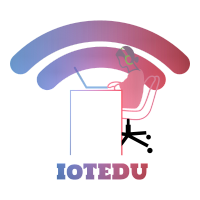smart farming use cases
With our world-class, state-of-the-art IoT products and solutions, we can transform the business of any industry by improving their efficiency, reducing unnecessary costs, ensuring better customer service and a detailed track of the logistics involved.
Smart Farming
Smart Farming refers to using state of the art technologies to manage farms. This helps improve the quality and quantity of products thereby delivering a form of agriculture that is both productive and sustainable.
Monitor climatic conditions
- A wide variety of sensors is used to collect data from the surrounding environment. The data collected will be mapped and displayed.
- In case of inclement weather conditions, the client will be notified immediately.
- Farmers will receive live data and will be urged to take the necessary steps in order to protect their crops.
Automated Greenhouse
- Optimal conditions can be achieved through the parameters collected via sensors.
- Clients can control agricultural sensors like smart sprinklers manage irrigation and lighting system in a remote fashion.
- Remote monitoring systems protect valuable plants from extreme temperature fluctuations.
Cattle monitoring
- An effective way to cut back on unwanted costs is to ensure that the livestock is healthy. This can be done by closely monitoring the health of their livestock.
- Farmers can be alerted at the first sign of illness through a network of connected sensors in a wearable. These sensors monitor blood pressure, heart rate, respiratory rate, digestion, temperature, and other important vitals.
- A cow’s reproductive cycle can be monitored through IoT. Farmers can learn when a cow goes into heat and take
- IoT can also be used to observe and track the health and estrus cycle of dairy cows.
Monitoring soil quality
- Farmers can maximize their yield and make enhance the use of resources with the help of IoT.
- Sensors can be used to measure soil temperature, volumetric water content, photosynthetic radiation, soil water, etc. potential, and soil oxygen levels.
- Data from the IoT sensors are then transmitted back to the cloud for analysis, visualization, and trend analysis.
Monitor silo and tank levels
- The traditional method of manually monitoring the level of your storage tanks and silos is extremely inefficient and grossly inaccurate.
- With the help of IoT, the client will always know exactly how much wheat, grain, feed, and fuel is available on hand.
- Knowledge of available stocks can help them plan ahead and reduce costly, last-minute orders. One can anticipate refill schedules and never run out of stock again.
